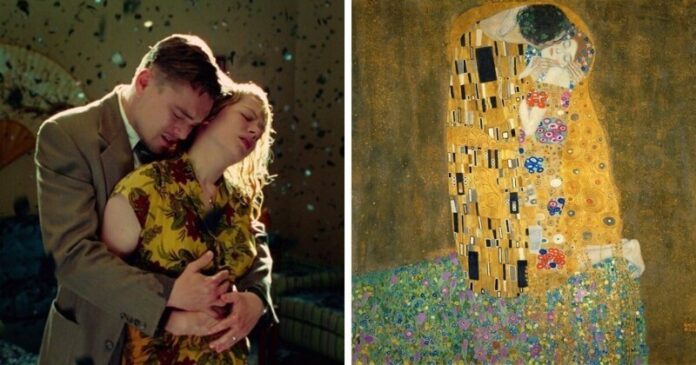In cinema, as in any other art form, inspiration plays a huge role. Creating their masterpieces, directors often draw it from the works of famous artists. Not every viewer can notice famous paintings in movies, but having solved this riddle, one can find new meanings, see the inextricable connection between the two spheres of art and admire the many topics that have remained relevant through the centuries.
Sandro Botticelli’s The Birth of Venus (circa 1484)/ Terry Gilliam “The Adventures of Baron Munchausen” (1988)
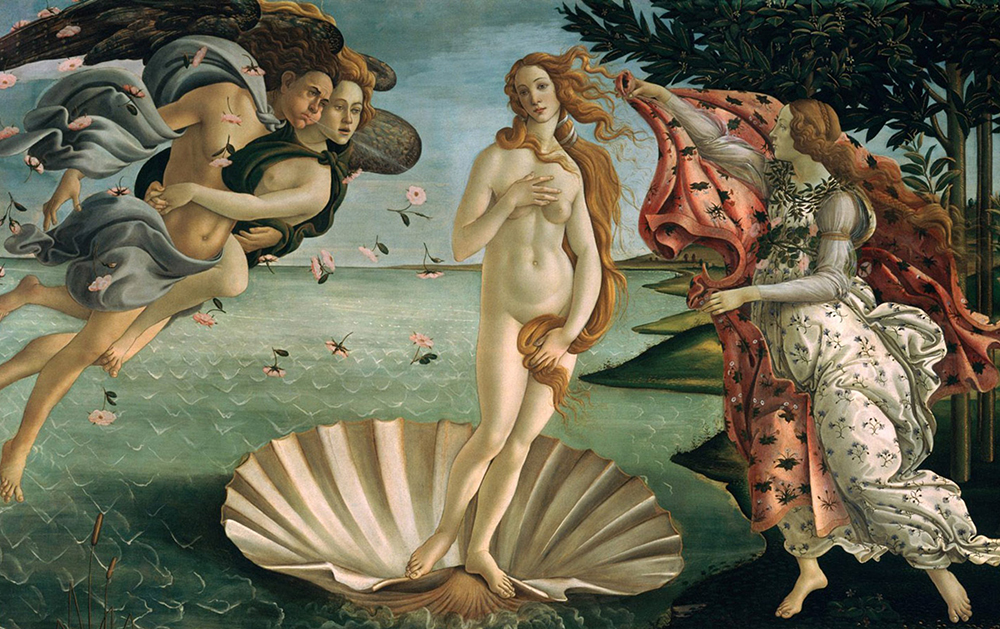
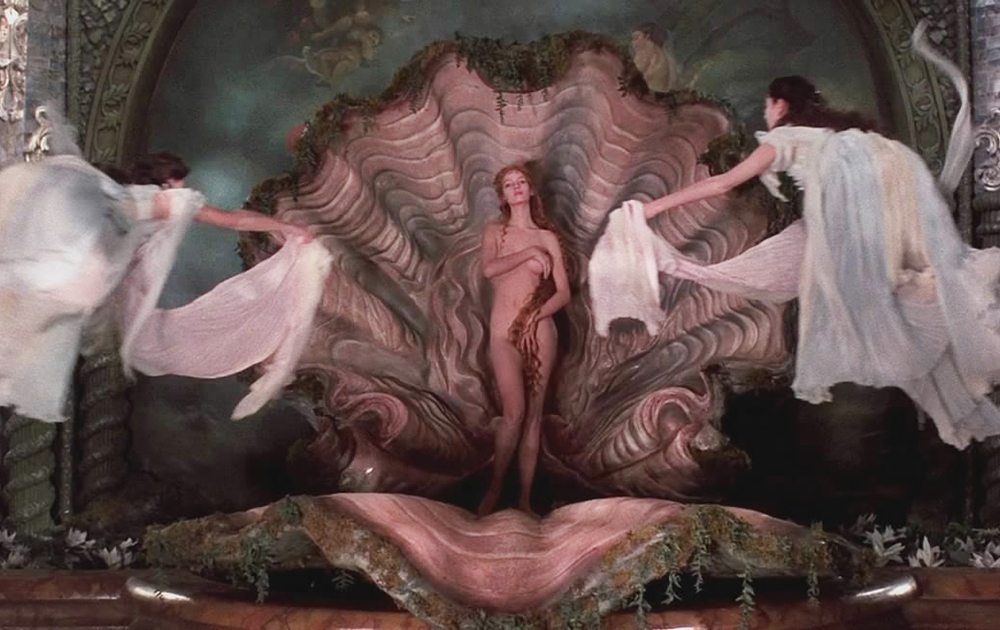
One of the most striking “film readings” of the century-old works was the work of Terry Gilliam “The Adventures of Baron Munchausen”. In his adventurous story about the great deceiver, the director decided to turn to the painting “The Birth of Venus” by Sandro Botticelli.
Uma Thurman appeared in the provocative image of Eve in the “divine” plot, accurately depicting the bohemian nature of the original image. All this trepidation and sublimity, coupled with the surroundings, looked ironic and easy.
It is difficult to look at such a copy of a painting in a movie, seriously. The scrupulousness of the reconstruction has faded into the background.
Diana Arbus “The Twins” (1967)/ Stanley Kubrick “The Shining” (1980)
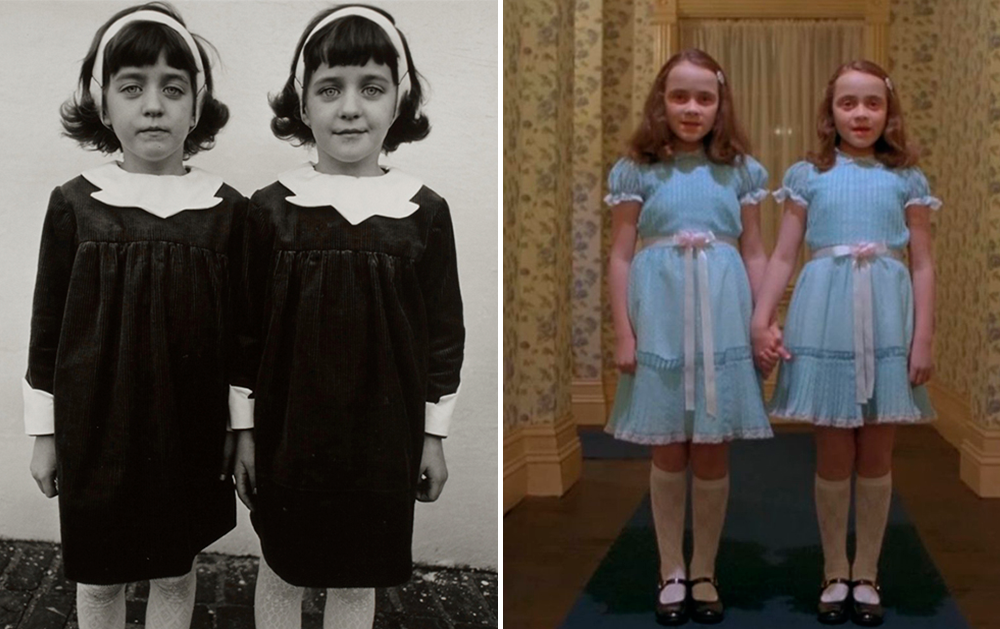
It’s hard not to mention this refrain, even if it refers to photography, not painting. These two girls are terrifying for the second generation of art lovers – a static pose, an eerie glance. The girls seem to be cute children, but agree – the viewer feels uncomfortable under their gazes. This is the vision of beauty used by the master of contrasts Diana Arbus.
Frida Kahlo “The Broken Column” (1944)/ Luc Besson “The Fifth Element” (1997)
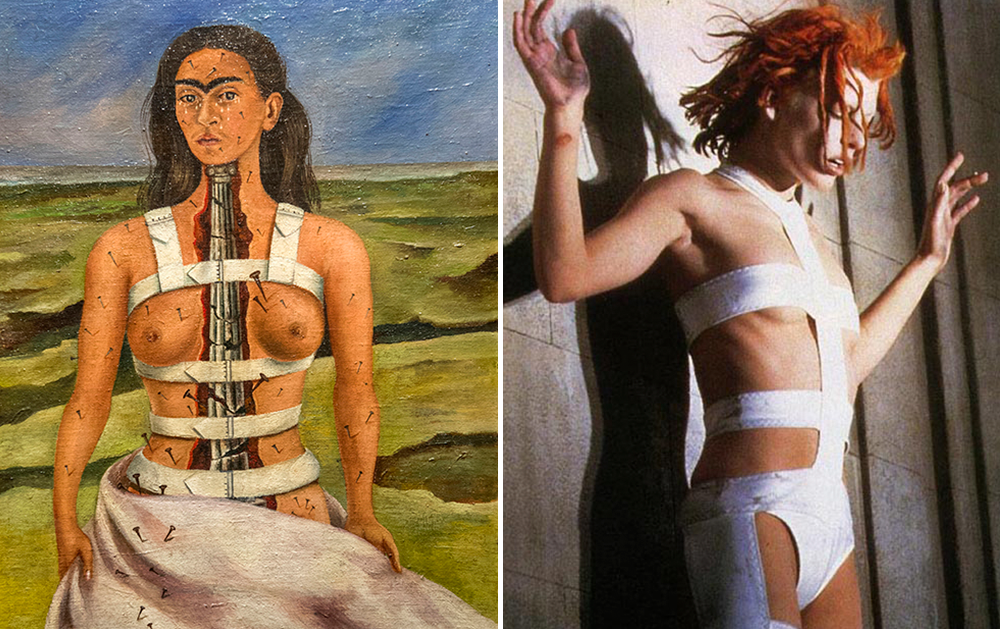
The mystical, strange, unearthly Frida Kahlo with her vision of society, art and life is another example of famous paintings in movies. The mystical, strange and literally unearthly Lilu from the “Fifth Element” is something radically new for humanity. These two unusual figures were combined by fashion designer Jean-Paul Gaultier, who created costumes for Luc Besson’s film, creating the image of Lilu in these already iconic white robes.
Edvard Munch “The Scream” (ca. 1893 – 1910)/ Wes Craven “The Scream” (1996)
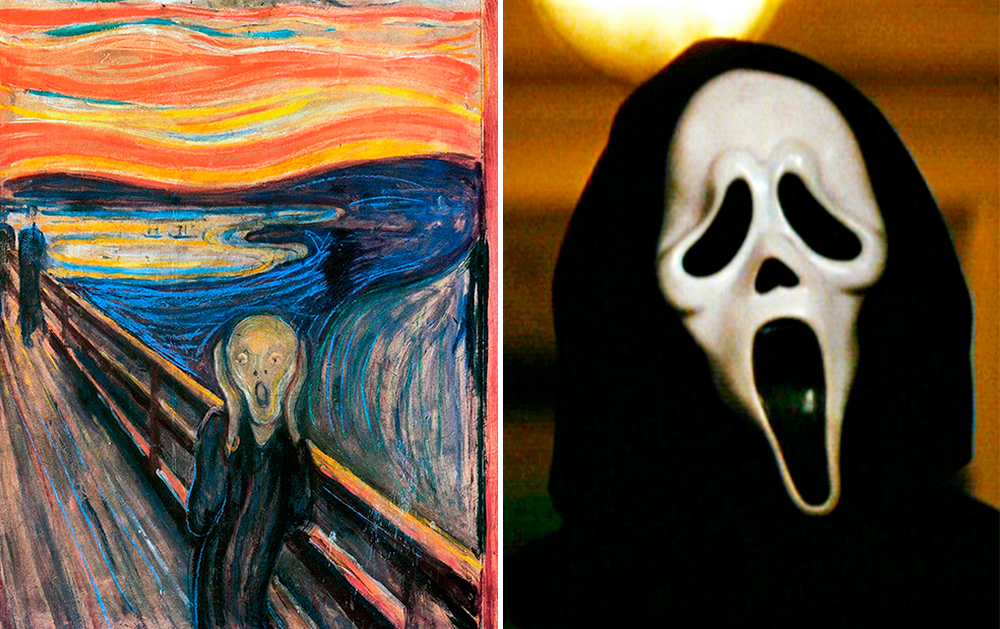
“Scream” is a cult slasher from the King of Horror Wes Craven. The very image of the “guestface” became a variation of the screaming man from the painting of the same name by Edvard Munch.
Fragonard “Swing” (ca. 1767)/ “Rapunzel: A Tangled Story” (Disney, 2010)
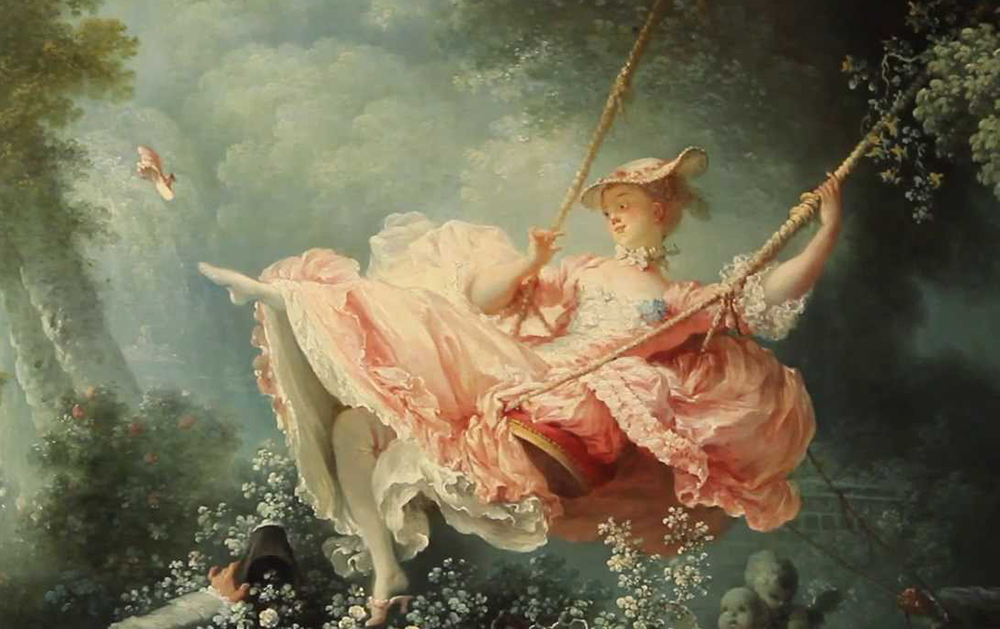
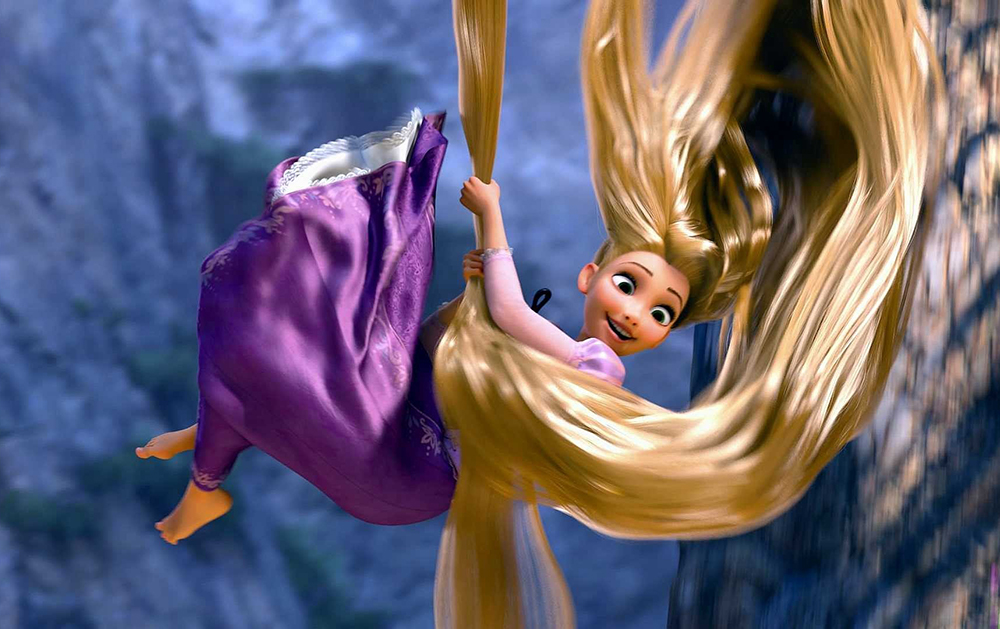
The young Rapunzel from the Disney cartoon of the same name is a real creator, an artist who painted her tower “from” and “to”. But did the little princess know that she was not only part of the royal family, but also a “copy” of the girl from Fragonard’s painting “Swing”? One way or another, but a bright variation of Disney has become an excellent embodiment of a magnificent painting in a movie.
Thomas Gainsborough “The Boy in Blue” (1770)/ Quentin Tarantino “Django Unchained” (2013)
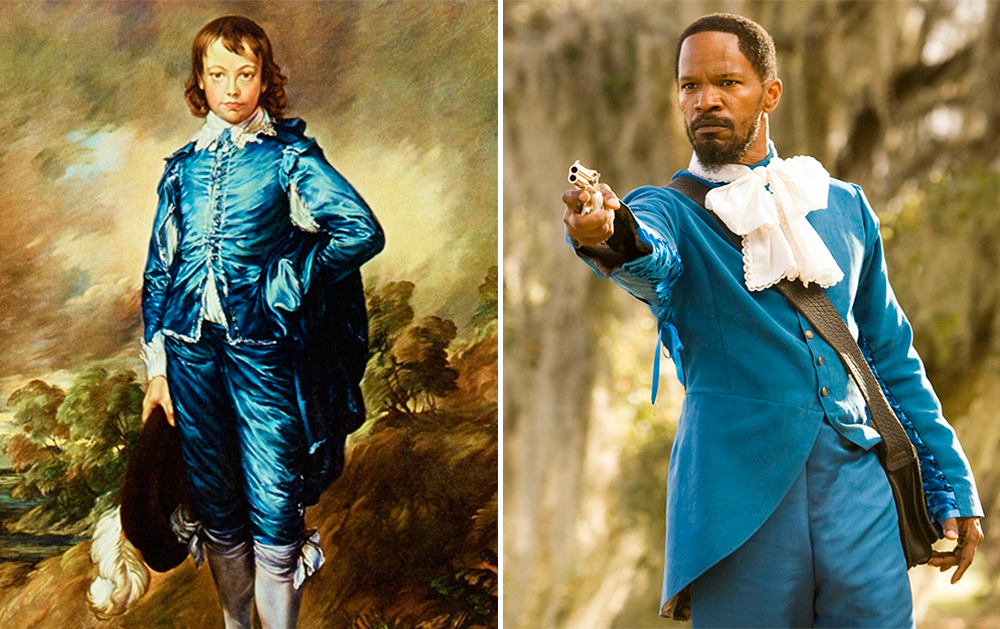
This is one of the brightest and even strongest episodes of Quentin Tarantino’s Django Unchained. This appearance of Django in a blue suit became a whole symbol of the era, social thought of the times of liberation from slavery, freedom and pride.
You might think Tarantino specifically compared his hero with this painting, because the “Boy in Blue” by the Briton Thomas Gainsborough is the pure personification of the classic aristocrat. Thus Tarantino was able to emphasize an impressive social contrast with all the problems that follow from this.
Everything in this world is connected – and the same applies to various spheres of art. Photographers and artists design albums of musicians, composers write soundtracks for films, directors, inspired by the works of artists, use famous paintings in films. Someone may say that on the part of cinematographers, the “embodiment” of paintings is plagiarism, but in fact it is the most common synthesis of painting and cinema.






